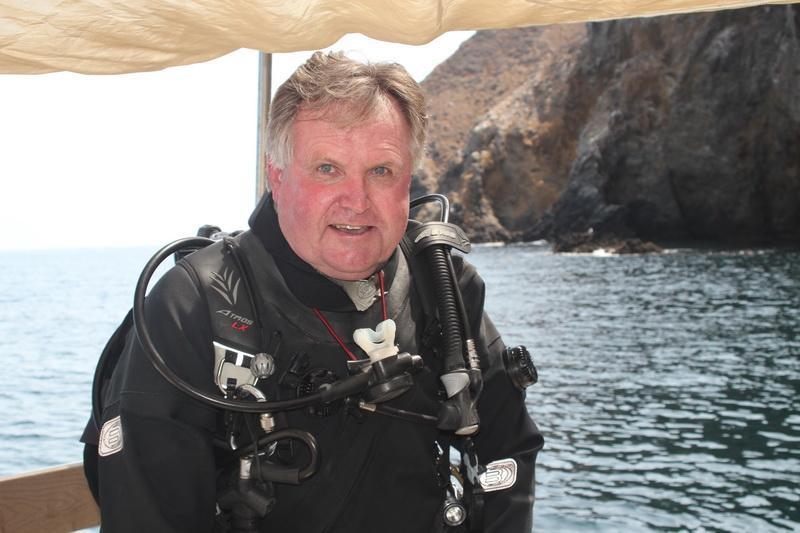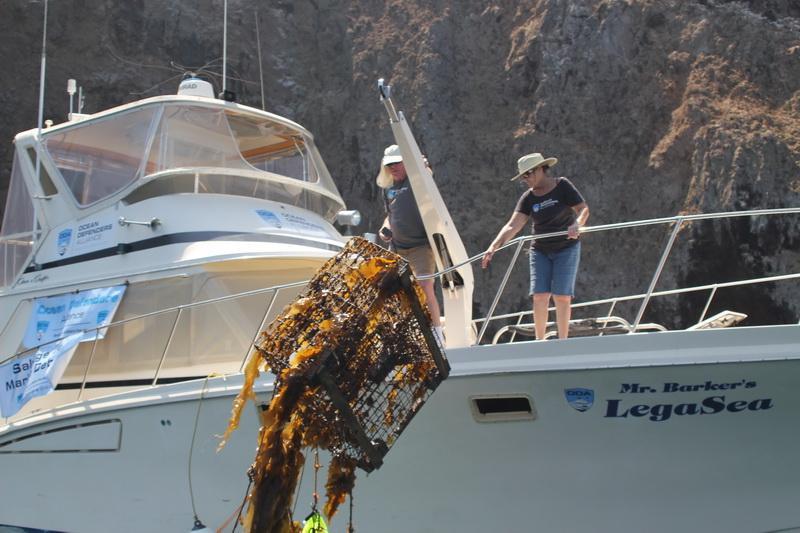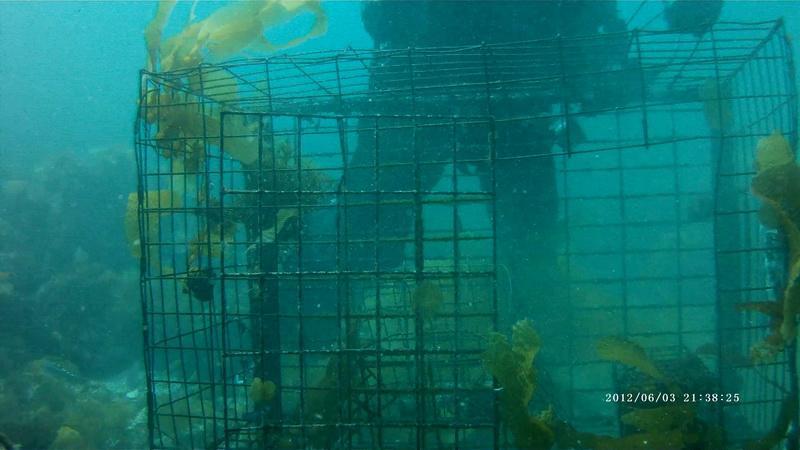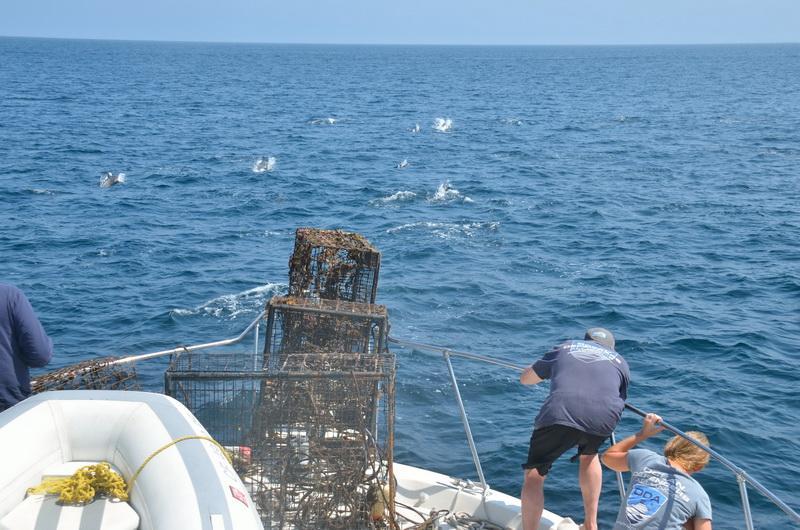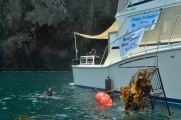By Founder and President Kurt Lieber

Turns out it was a problem with our fuel system. There are certain microbes that can grow in diesel fuel, and if left unchecked can become so numerous that they can clog up the fuel filters to the point that no fuel reaches the engines.
We’ve had this problem for over a year now, tried a number of fixes, and generally replaced the filters and went on our way. But this time, changing the filters didn’t do the job. With further investigation, we found out that the fuel in the tanks needed to be “polished.” This process removes all the debris that’s in the tanks—resulting in a completely clean fuel system.
In order to accomplish this cleaning project, we had to cut big holes in the tanks which enabled a technician to insert a vacuum hose into the tanks to remove the contaminated fuel along with the debris. That done, we sealed the tanks back up, put new fuel in the tanks, and headed out to Anacapa. PROBLEM SOLVED!
Ocean Conservation Back in Action
We had a boat-load of our dedicated volunteers as we headed out for Anacapa Island.
Above: Kim Cardenas, Jeff Conor, Jeff Larson, Brook LaCouceur, and Al Laubenstein.
The divers were: Kim Cardenas, Jeff Connor, Jeff Larson, and Al Laubenstein. The deck crew was: Lisa Davis, Brooke LaDouceur, Jim Lieber, and myself.
We had an absolutely beautiful day with flat seas and dolphin pods escorting us on our way to and from the island. This is always a great feeling.
Department of Fish and Wildlife Gives ODA Great Input
Earlier in the month I had been invited to talk with several divers who work for the California Department of Fish and Wildlife (DF&W), and more that work with the Channel Islands National Marine Sanctuary. What was supposed to be a one-hour talk turned into three hours! It’s not that I am long-winded, but rather, the extended time was because the divers were earnestly eager to learn all they could about our work—especially ODA’s best practices when it comes to removing lobster traps with minimal impact to the surrounding ocean flora and fauna.
At the end of that conversation, one of the marine biologists gave me the locations of several abandoned lobster traps near Anacapa Island (in the Channel Islands, about 11 miles off the coast of Ventura County, California).
Speaking of government agencies, we got a great "two thumbs up" from the National Park Services rangers!
Back to the story, Kurt!
So anywho: Armed with that info, we headed out toward a site called Frenchy’s Cove. Within minutes of Kim, Jeff C., Jeff L., and Al dropping down into 40 feet of water, we saw a pair of lift bags break the surface. Two lift bags? Must be a really heavy trap!
Then about 100 feet away from the first trap, we saw another lift bag at the surface.

Jim, Lisa, and Brooke launched the RIB, and soon Jim and Brooke headed out to the first set of lift bags. They radioed back to me that this was not just a heavy trap…but a huge one! They slowly towed it over to the LegaSea, where Lisa and I hauled it aboard using our hoist.
As Jim and Brooke took off to retrieve the second trap, we spotted another set of lift bags 100 yards away. Within minutes we had the divers back on board, along with three traps! What was interesting about the traps was how much of the giant kelp was growing on them. Giant kelp has a hard time surviving waters warmer than 68 degrees. The waters in southern California have been extremely warm this year, and reported as high as 78 degrees in some locations. So, seeing that much kelp growth came as a nice surprise. Unfortunately, we did see some invasive kelp as well, which is definitely NOT a good sign.
We took a break and talked about the underwater conditions. Visibility was over 20 feet, which sure makes it easier to find these traps. Plus Jeff C, and Al were treated to a fly-by of a bat ray, which Jeff filmed.
After an hour surface interval (that is “dive speak” for a break), we headed a half-mile away where another trap had been seen by the DF&W biologist. This one had a buoy still attached to it, so we just got close and pulled it up by hand. This one was a duplicate of the other huge trap we pulled up at the other site.
By now, it was getting late in the day and the winds and currents were picking up. So, rather than go for a 2nd dive, which is our usual plan, we called it a day and headed back to the Channel Islands Harbor. On the ride back, we were enthralled by a pod of about 200 dolphins that cavorted in the bow wave and in the waters all around us.
Here's a close-up of the beautiful marine mammals who rode the bow waves of our boat!
It was a beautiful way to end our day. Four traps, 200 feet of trap line, the boat ran GREAT, and a dolphin escort!
Life doesn’t get much more rewarding. Please join us by filling out a volunteer application, or making a donation—today! :-)
Be sure to look at ALL the pictures of our adventure!






